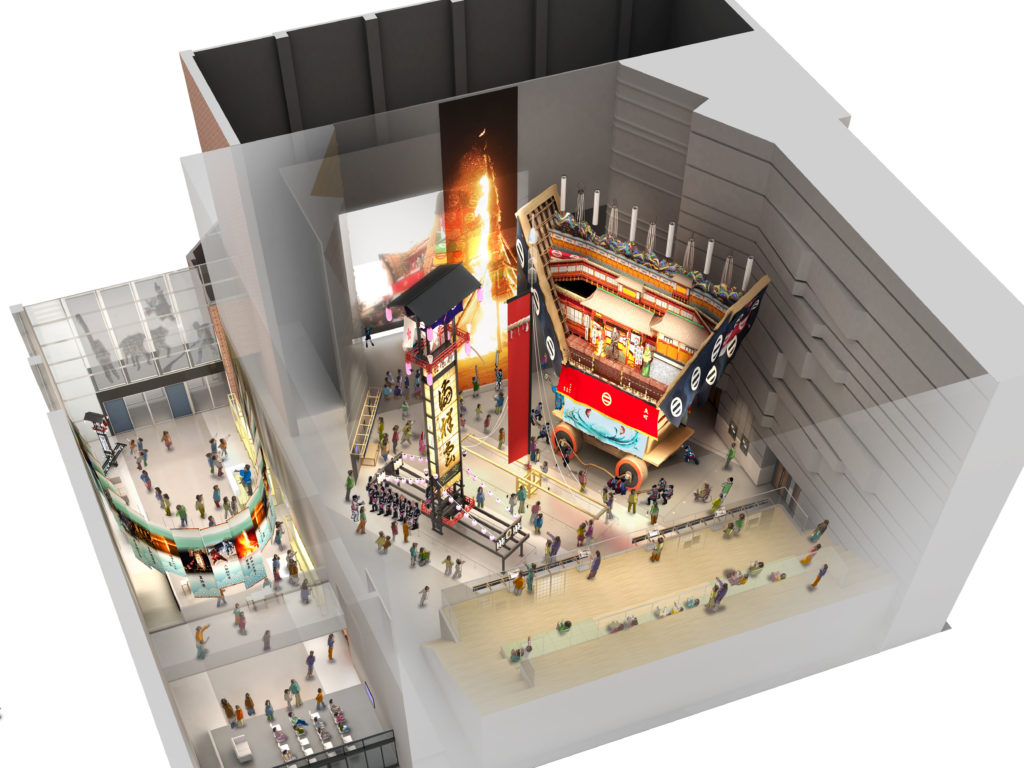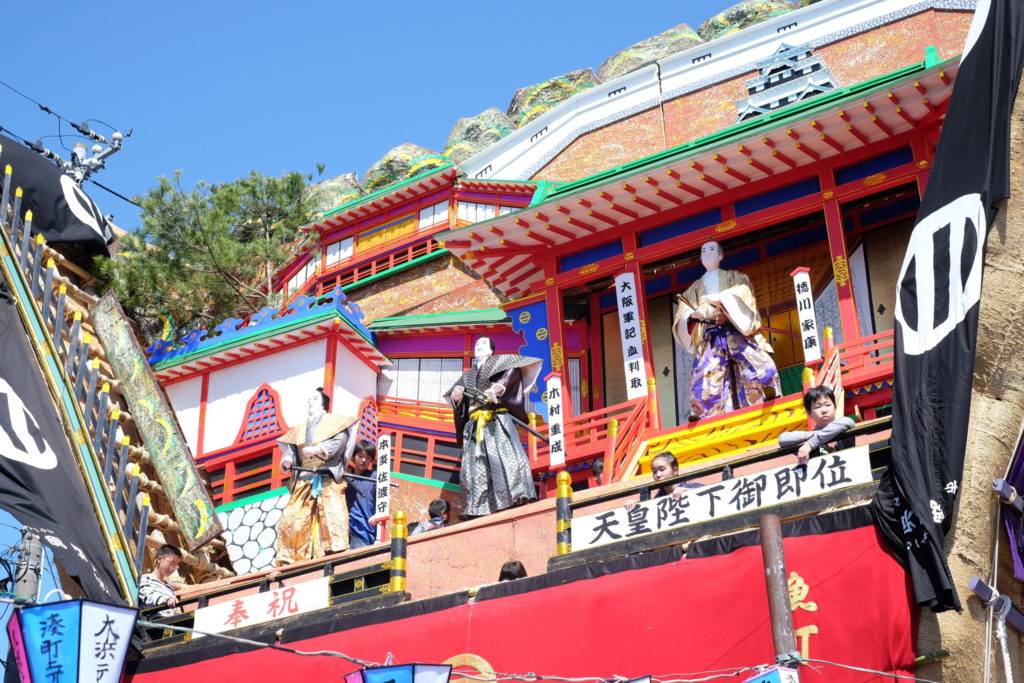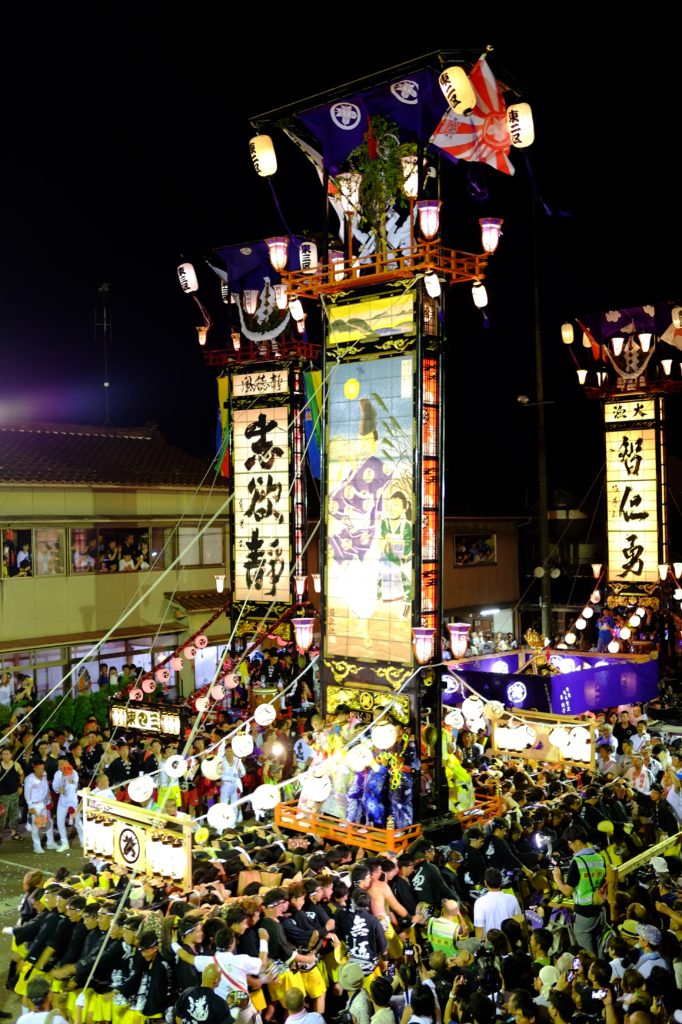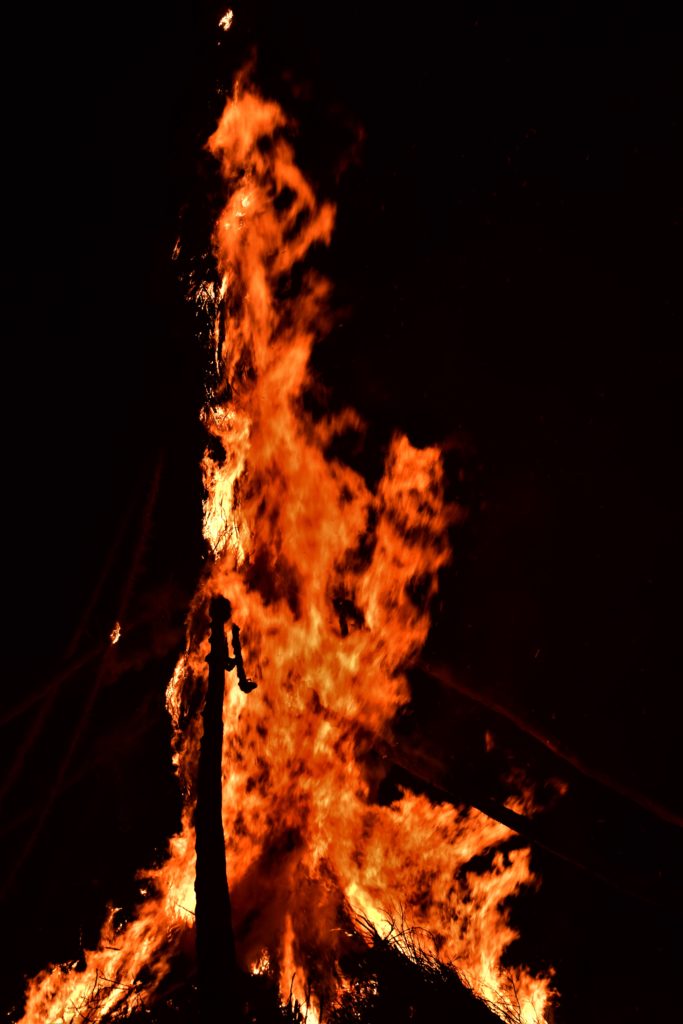Indoor Map

Tourist Information Entrance
There is reception desk, shops and mini Houtou display. Also introducing various festivals held in Nanao City through displayed banners.
Giant floats: the Seihaku Festival
Seihaku is the spring festival of Otokonushi Shrine in downtown Nanao. The festival is said to have started in 981 CE and takes place from May 3-5. The highlight is a parade of three giant floats (dekayama), each around 12 meters tall, and weighing about 20 tons. Colorful banners decorate the sides of the floats, each decorated with motifs particular to its neighborhood. On top of the floats are lifelike figures in scenes from popular kabuki plays.
-e1583994273423.jpg)

Towering lanterns: the Issaki Hoto Festival
Tall lanterns are carried to light the way for portable shrines at evening festivals across the Noto Peninsula. In Nanao, they are called hoto, in other areas, kiriko. On the first Saturday in August, residents of the fishing town of Issaki come together at Issaki Hachiman Shrine to pray for good catches.
A portable shrine is carried through the town, accompanied by six towering hoto lantern floats, representing the neighborhoods of Issaki. The lanterns are painted with auspicious phrases on the front, and brave warriors or mythological figures on the back. Measuring up to 13 meters high and weighing around 2 tons, each float is shouldered by around 100 people, who call out prayers for successful fishing as they make their way through the narrow streets. After looping through the town, the hoto floats assemble in front of the temporary shrine. The festival culminates in a fireworks display.

A flaming pyre: the Notojima Koda Fire Festival
On the last Saturday in July, a huge pillar torch is ignited near Iyahime Shrine in the town of Koda on Noto Island, lighting up the night sky. It is the culmination of a series of summer festivals held at the shrine to pray for good harvest and abundant fishing. The torch is a 30-meter-long pine tree, wrapped with bundles of brushwood. It is topped with a bamboo rod decorated with paper streamers. The pillar torch is hoisted upright and held in place by thick ropes. At dusk, a procession of towering lantern floats (hoto) and a portable shrine (mikoshi) head from Iyahime Shrine to the nearby burning site.
At the site, participants light torches, which they swing with a rhythmic motion to keep them lit as they circle the pillar torch, until the leader signals for them to light the brushwood around the pillar. The brushwood flares up immediately. The pillar torch burns and finally crumbles. According to local lore, if it falls towards the mountains, the year’s harvest will be abundant, and if it falls towards the sea, the town can expect a good catch. As soon as the pyre falls, people compete to retrieve the bamboo rod, which is said to bring good fortune and happiness to the bearer.

Colorful flags: the Okuma Kabuto Festival
Red wakubata banners, each up to 20 meters tall, signal the Okuma Kabuto Festival in Nanao. It is the grand festival of Kumakabuto Arakashihiko Shrine and is held on September 20 every year to thank the deities for a good harvest. Each red banner represents one of the 19 subordinate shrines in the area.
A portable mikoshi shrine is carried from each of the subordinate shrines, with a procession of flag bearers and musicians, and the red banner carried on a wooden frame brings up the rear. Each procession is led by a dancer dressed as Sarutahiko, a deity with a long nose and a red face who is known for guiding the other deities from the celestial realm. Sarutahiko is often portrayed wearing the mask of a mythical tengu, a mischievous, bird-like goblin. The dancers improvise their wild movements as they reach the main shrine.
After assembling at the shrine, the participants carry the mikoshi and banners to an open field, where each group takes turns to tip their banner until it is parallel to the ground. It takes about 40 people to tip the banner and its frame without dropping it, and then right it again. Some groups race their mikoshi underneath the banner as it tips to entertain the crowds. The combination of daredevil tricks, dancing deities, and lively music make the festival popular with visitors.

